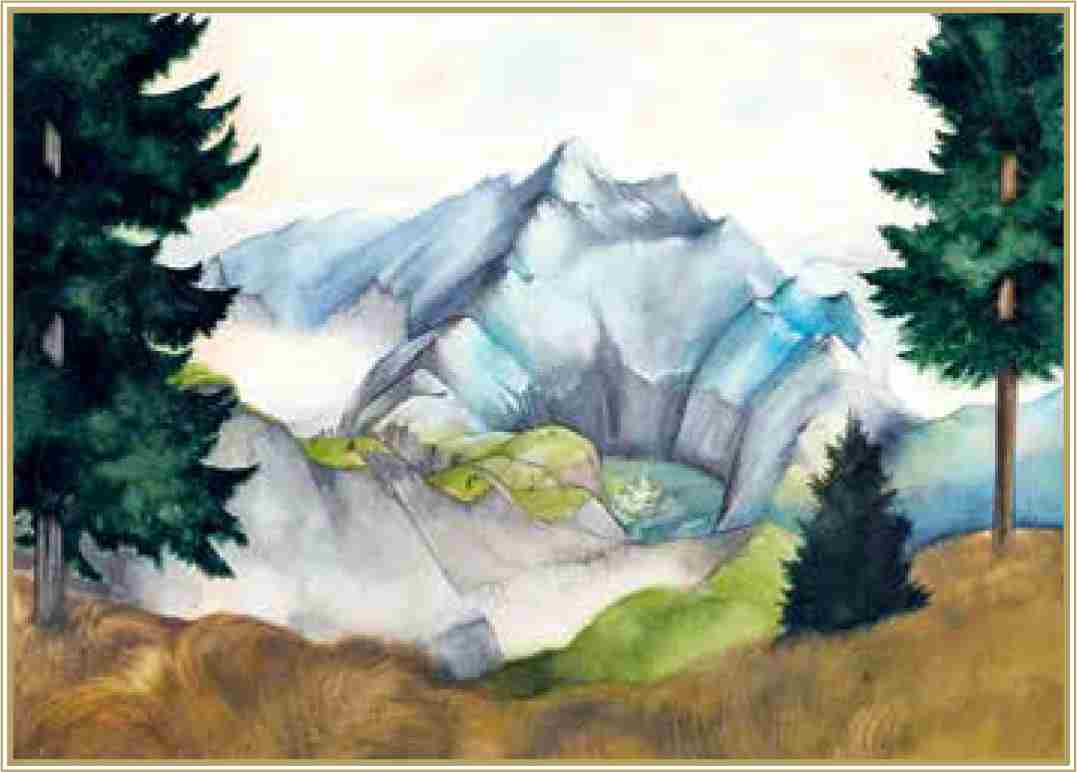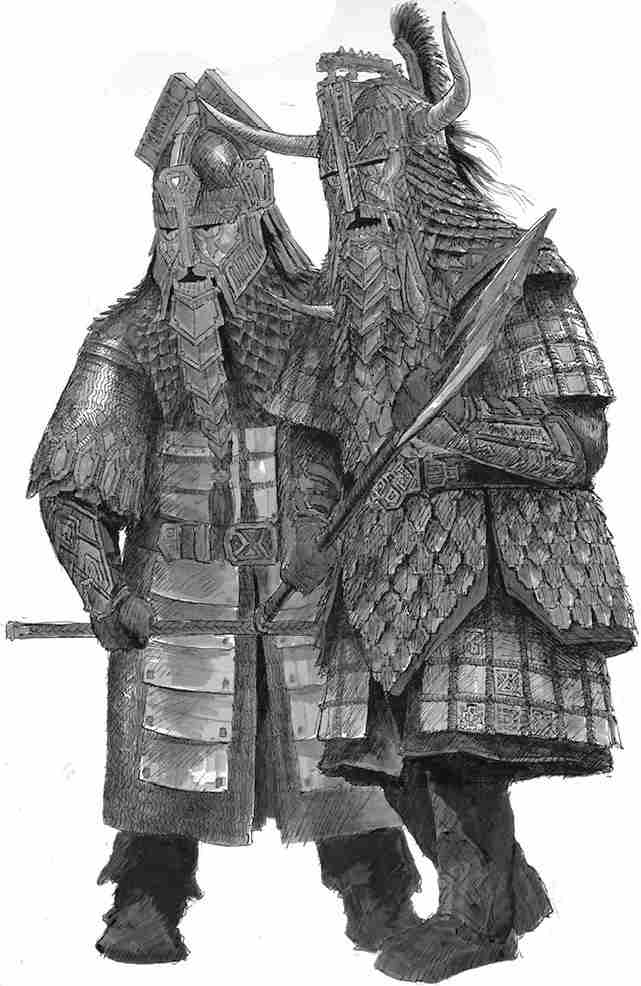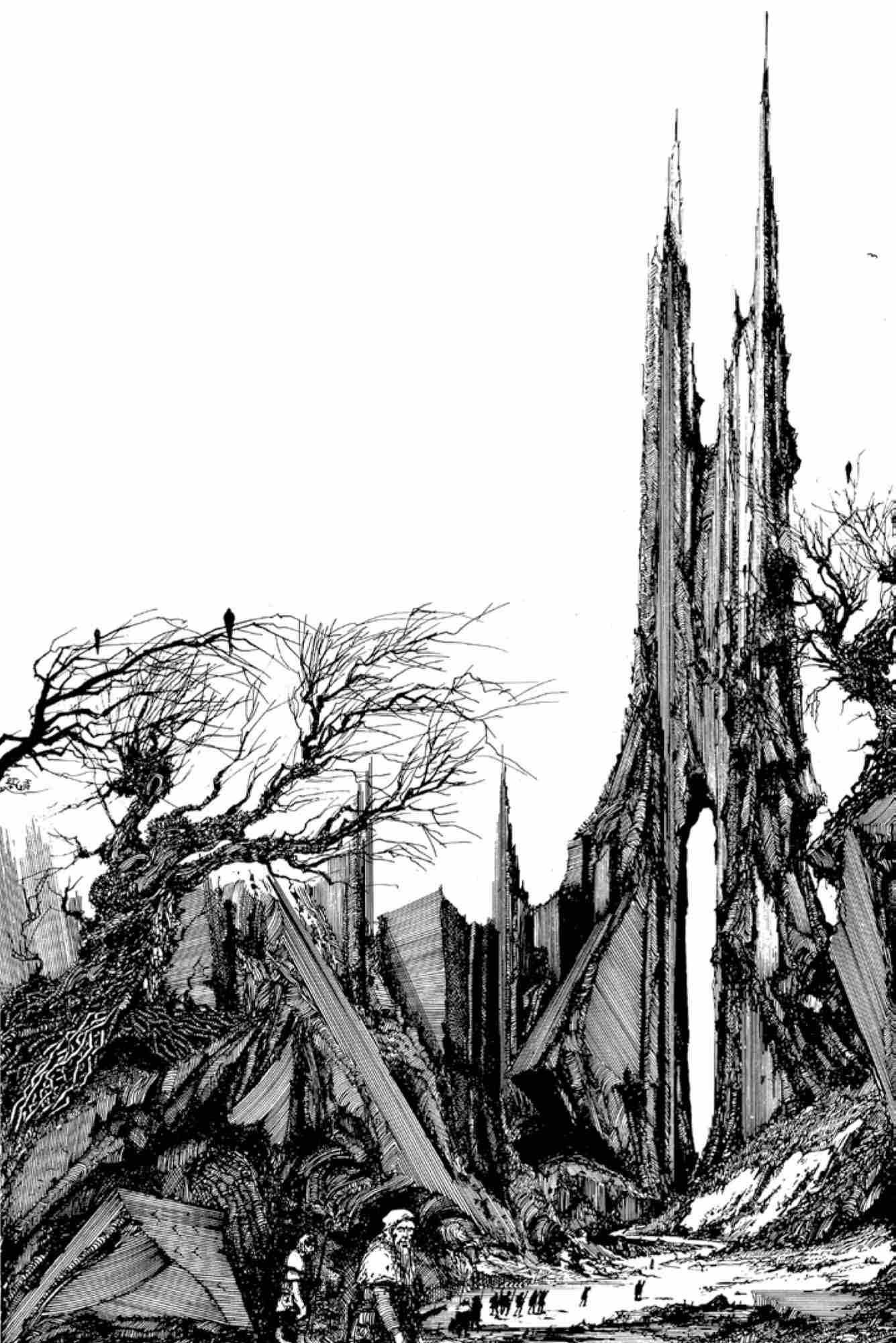
Morgoth, the Dark Enemy

Morgoth, the Dark Enemy
The medieval German legend that most resembles the imaginative sweep and dramatic impact of The Lord of the Rings is the tale of the hero Dietrich von Berne and Virginal, the Ice Queen of Jeraspunt. There are aspects of this tale that are suggestive of the major themes and characters in both The Lord of the Rings and The Silmarillion.
Of all the heroes of medieval German romance, Dietrich von Berne is certainly the greatest. This mighty Ostrogoth hero who was also called Dietrich of Verona was, like Arthur and Charlemagne, a central figure around which a large number of hero’s stories were told. Also like Charlemagne, Dietrich was based on a real historical figure: in this case, Theodoric the Goth, who eventually became the Roman emperor Theodoric the Great (454–526 CE).
From Tolkien’s letters, we know that he was fascinated with the Goths. He felt that surviving fragments of Gothic text combined with reading of Latin historical documents gave him exciting insights into an authentic ancient German culture. And although he was more interested in the historical Theodoric the Goth, he was obviously imaginatively provoked by the adventures of the romantic Dietrich von Berne.
In the legend of the Ice Queen, Janibas the necromancer, as the black horseman, is very like a combination of Sauron the Necromancer and his chief lieutenant, the Witch-king, Lord of the Ringwraiths. The One Ring is replaced by an iron tablet, but the climax of the tale reads very like Sauron’s ultimate battle at the Black Gate at the end of The Lord of the Rings. The result of the destruction of the iron tablet on Janibas’s evil legions is identical to the destruction of the One Ring on those of Sauron.
Janibas’s father, Orkis, the king of the mountain giants, is very like Sauron’s ancient master, Morgoth the Dark Enemy, who rules the evil mountain realm of Angband in The Silmarillion. It is interesting to note that the cause of Morgoth’s war with the Elves is the star-like Silmaril jewels that Morgoth wears in his Iron Crown. The cause of Orkis’s war with the faeries is the star-like jewel that the Ice Queen wears in her crown.
Although the Ice Queen is comparable to the Elf queen Galadriel in her enchanted forest realm of Lothlórien, or even the Elf princess Arwen in Imladris in The Lord of the Rings, the siege of the faerie ice castle of Jeraspunt in the middle of the Alps is more like the many-towered Elven city of Gondolin in the middle of the Encircling Mountains in The Silmarillion.

Elven citadel of Gondolin hidden within the Encircling Mountains

Although in the tale of Dietrich and the Ice Queen aspects of the ring are taken on by the iron tablet and the star-like jewel, there are many legends of German romance where the ring is overtly the key element. This is certainly true of the Langobard and the Amelung hero cycles.
The fierce Langobards were one of the many powerful Germanic tribes who invaded the eastern European borderlands of the Roman Empire. These warrior people later swept into northern Italy, where they were known as the Lombards, and gave their name to the region called Lombardy in the present day. Described by Latin historians as the supreme horsemen of the Germanic peoples, the Langobards were Tolkien’s models for the Rohirrim. Historical accounts of the Langobard cavalry in battle closely resemble the dramatic “Charge of the Rohirrim” in The Lord of the Rings.
The hero of the Langobard cycle is Ortnit, who is given a gold ring by his mother that gives him the strength of 12 men. This ring allows him to subdue an innocent-looking, unarmed child blessed with huge physical strength, who has slain scores of knights. Once Ortnit makes this rather embarrassing conquest, it is revealed to him that the child is actually none other than the powerful dwarf king Alberich (the German name for Andvari). He acknowledges that he is the same dwarf of legend and is now more than five hundred years old. Furthermore, the dwarf king reveals that the ring on Ortnit’s hand once belonged to him, but he gave it to Ortnit’s mother as a token of love, for in truth Alberich is Ortnit’s true father.
The dwarf king now joyfully gives his son armour and a sword. The sword, called Rosen, and the armour were both forged by Alberich and tempered in dragon’s blood. The sword is unbreakable, and the armour is impenetrable. He also tells him that the ring will not only increase his strength, but can also be used to heal the sick and wounded, and can be used magically to summon Alberich himself. With the sword, the armour and the ring, Ortnit wins fame and riches and becomes king of Lombardy. In the end, however, Ortnit meets his end when two dragons crush him to death. His sword and armour remain in their cavern, but his ring is retained by Alberich, until the coming of a hero who might be a worthy heir to Ortnit.

Dwarf Armour
The heir to the ring emerged in the Amelung hero cycle. The Amelungs were a German tribe who rose to prominence when their warrior king Anzius was crowned emperor of the Eastern Empire in Constantinople. The greatest hero of the Amelung cycle is Wolfdietrich, who is the rightful heir to the emperor. However, abandoned in childhood by his brothers, he is raised by wolves. After many adventures, Wolfdietrich comes to Lombardy, where he is challenged by the dwarf Alberich. Winning a test of strength with Alberich, he is awarded Ortnit’s ring and goes on to fight the two dragons of Lombardy. Taking the sword Rosen from Ortnit’s dead hand within the cave, Wolfdietrich slays the dragons. The victorious Wolfdietrich is married to Ortnit’s widow and becomes king of Lombardy. Armed with the ring, sword and armour, Wolfdietrich raises an army, marches on Constantinople and lays claim to his birthright. He is crowned Emperor of the Eastern Empire, but his destiny is not yet fulfilled. He returns to Lombardy with an even greater army, then marches south to Rome, where he is crowned emperor of the West as well. Once again, the master of the ring reunites an ancient broken empire.

In the many German hero cycles, the most persistent character in the ring quest tradition is the guardian of the ring and the treasure. This is the dwarf known as Andvari in Norse tales and Alberich in German legends. Although capable of being tamed, he is usually a sinister figure; however, in later romances his appearance and powers often change. He sometimes lends help to other heroes under alternative names: Alferich, Laurin and Elbeghast. Increasingly, this character supplies all the supernatural elements in German romance: dwarf, wizard, elf, smith, guardian and god. By the late 16th century he is entirely transformed, appearing in Shakespeare’s A Midsummer Night’s Dream as Oberon, king of the faeries, whose main business seems to be the orchestration of love affairs. Quite a remarkable evolution from a rather nasty Norse dwarf.
In Tolkien, the Dwarves are often hoarders and guardians of various treasures. However, an equivalent figure to the dwarf Andvari/Alberich in The Lord of the Rings is manifest in the strange character of Sméagol/Gollum, the former Hobbit turned into a tormented ghoul by the curse of the One Ring. He is not far off becoming a Ringwraith enslaved by the power of the One Ring, but manages in some perverse Hobbitish way to remain his own creature.
In medieval German romance, the same dwarf of the Langobard cycle of Ortnit and the Amelung cycle of Wolfdietrich reappears in the hero cycles of the Goths. Inevitably, their hero Dietrich von Berne encounters Alberich. Legend dictates that Dietrich von Berne was the great-grandson of the Amelung hero, Wolfdietrich. Dietrich goes into battle with the dwarf king Alberich, who – in this particular manifestation – rules a subterranean kingdom in the Tyrolean mountains. After various intrigues and battles, Dietrich overthrows the dwarf and wins his magical golden ring, a girdle of strength, a cape of invisibility, a vast golden treasure and the sword Nagelring.
Dietrich’s exploits as the premier German hero are as extensive as Arthur’s and Charlemagne’s. His adventures cross over many other ring quest cycles in many rather unexpected ways. Inevitably, the peripatetic Dietrich makes an appearance in the German people’s greatest medieval epic, the Nibelungenlied. As a liegeman to the Hun Emperor Etzel, he is reluctantly drawn into the Nibelung tragedy. He becomes the deus ex machina of the epic tale, and is forced into a position where he must destroy the last vestige of the Nibelung dynasty.

